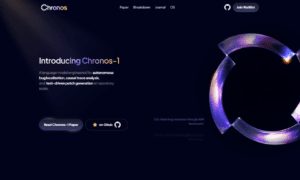Computer-aided design (CAD) has been instrumental in transforming how engineers work and how products are built worldwide. Each year, the tools engineers and designers use continue to evolve. But how did it all start 60 years ago?
The foundations of CAD software can be traced back to the 1960s when experimental systems were developed. However, before the software could gain widespread popularity, designers of the 1970s continued to produce blueprints by hand, working at drafting tables that had large drawing surfaces while being well-equipped with drawing tools such as drawing pens, scale rulers, French curves, and templates. These workspaces ranged in size from roughly 24 x 36 inches to 37.5 x 72 inches and required considerable time, skill, and effort to produce quality drawings.
In the 1980s, as computing power advanced, CAD software gained significant momentum through the use of UNIX systems that could be used with styluses and keyboards. The average price per seat for the PADL-2 software was $50,000. The 1990s was when CAD moved from specialized UNIX workstations to office-style desks and printers that used mouses and keyboards. The average price per seat for the PTC Pro/ENGINEER software was reduced to between $14,000 and $20,000.
Bringing CAD software to Windows machines was much cheaper than using dedicated CAD workstations. For example, a Silicon Graphics Onyx RealityEngine was a CAD workstation that cost around $250,000, while an IBM 5110 computer was about $18,000 and a Silicon Graphics Indigo 2 R5000SC was about $14,000. One of the cheapest Windows machines was the Emerald Green Acer Aspire, which sold for just $2,500. The move also dropped the average price per seat for the CAD software to $4,000. The software made design more accessible to users as well by being intuitive enough to master in a few months rather than years, eliminating the need for specialized hardware, and allowing users to work on personal computers instead of massive UNIX systems.
Today, we can use CAD to make almost anything. This includes big products such as industrial equipment, submarines, and airplanes along with smaller products such as ice cream machines, dumbbells, and microrobots. Other unique innovations consist of Ring doorbell cameras, Boston Dynamics robots, and humanoid robotics.
Beyond its software and technology, CAD represents a vibrant community of engineers, designers, and innovators who collaborate, share ideas, and learn from each other to further advance innovation. CAD conferences have been held since 1999, bringing a passionate group of people together—from executives to students—to learn, network, and celebrate the technology and its community. These events have been a key industry touchpoint, particularly for 3D CAD and all aspects of product development. Notable conference speakers have included the science entertainment experts Mythbusters, Boston Dynamics founder Marc Raibert, and Ring CEO Jamie Siminoff.
Many in the industry consider 2024 as a pinnacle year of design, especially for CAD. The workspace can now be anywhere and the software is no longer just for industrial designers or mechanical engineers. Over the years, CAD has become increasingly available to academics, entrepreneurs, children, and now DIY enthusiasts. Furthermore, there are now online creators who contribute to the community daily, such as Zack Nelson of JerryRigEverything and James Hobson of Hacksmith Industries.
The evolution of CAD software is only accelerating, with much more to come in the years ahead. AI is already being integrated into workflows to serve as effective design assistants. Generative AI and large language models are being used to create virtual companions that learn from user behavior, provide intelligent suggestions, and summarize company know-how. Machine learning coupled with AI is being used to create AI drawings that can transform images into sketches, instantly assemble creations, and produce 2D drawings from 3D inputs. These developments are augmenting CAD tools to improve the product development process while making people more efficient designers and engineers.
CAD has long moved from drafting tables to advanced digital software that is accessible on everyday computers. What once required specialized machines and years of training can now be mastered by more people in much less time. With the incorporation of AI into CAD software, we will gain more collaborative, adaptive, and accessible tools like never before.
Read More From Techbullion




































